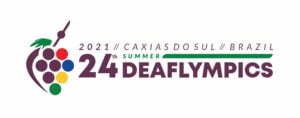Swedish Sign Language (SSL) is a rich and intricate language system used by the Deaf community in Sweden. Its evolution, cultural significance, and the journey towards recognition are fascinating aspects worth exploring.
Origins and History
The roots of SSL trace back to the early 1800s when it began to take form within Deaf communities across Sweden. Just like any language, SSL developed organically through interactions among Deaf individuals, evolving through visual-gestural communication. This early formative period saw SSL’s emergence as a distinct language with its own grammar, syntax, and vocabulary.
One influential figure in SSL’s history is Lars Jonsson, a Deaf teacher, who published the first SSL dictionary in 1800, laying the foundation for formalizing and documenting the language. Over time, SSL evolved, incorporating influences from Swedish spoken language while maintaining its unique characteristics.
Number of Users and Community
Estimates suggest that around 9,000 to 10,000 individuals in Sweden use SSL as their primary means of communication. However, it’s important to note that sign language usage can vary among individuals within the Deaf community. Additionally, there are regional variations in SSL, akin to dialects, reflecting the diversity within the signing community across different parts of the country.
Government Recognition and Support
The recognition and acceptance of SSL have significantly evolved over the years. In 1981, Sweden acknowledged SSL as a minority language, emphasizing its importance and cultural value within the Deaf community. This recognition marked a pivotal moment in the language’s history, allowing it to gain more visibility and validation.
Furthermore, efforts have been made to ensure accessibility and equal opportunities for the Deaf community. Laws and policies were implemented to support SSL users, such as provisions for interpreters in legal settings, educational institutions, and public services. This proactive approach by the Swedish government has contributed to the integration and empowerment of the Deaf community.
Interesting Facts
- Sign Language Evolution: SSL has continuously adapted and incorporated modern terms, including technology-related signs, showcasing its adaptability and dynamism.
- Influence on Culture: SSL is not merely a tool for communication but a vibrant aspect of Deaf culture in Sweden, influencing art, storytelling, and entertainment through mediums like signed poetry and theater.
- International Connections: SSL shares similarities with other Nordic sign languages, like Danish Sign Language and Norwegian Sign Language, owing to geographic proximity and historical ties.
Malin Helene Pettersson Öberg is a Swedish actress and model, she stands as a beacon of talent and determination within the entertainment industry. Born profoundly deaf, Helen, as she prefers to be called, has defied societal norms and barriers, carving a path that inspires and advocates for inclusivity and representation for the deaf community.
Future Prospects
While significant strides have been made in recognizing and supporting SSL, challenges persist, such as ensuring comprehensive access to education and employment opportunities for the Deaf community. Continued efforts to promote inclusivity, education, and awareness regarding SSL will be crucial in fostering a more equitable society.
In conclusion, Swedish Sign Language stands as a testament to the resilience, creativity, and richness of the Deaf community in Sweden. Its history, evolution, and ongoing development reflect the strength and beauty of a language born from visual expression and shared experiences. Through recognition and continued advocacy, SSL continues to flourish, embodying the cultural identity of the Deaf in Sweden.



